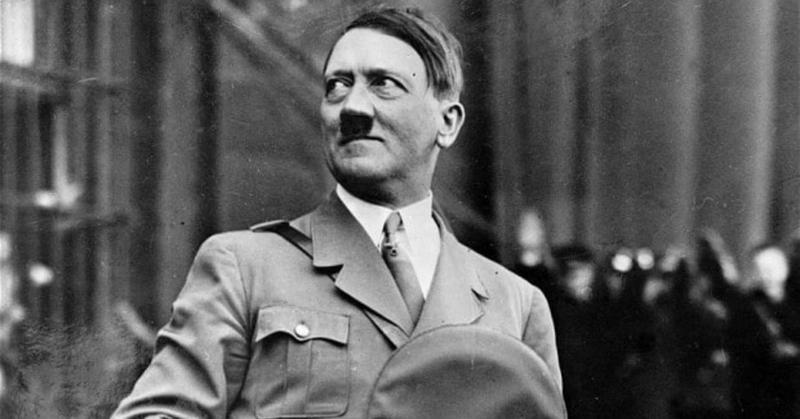Operation Flash: When Three Plots To Kill Hitler Failed On A Single Day
By | March 10, 2020
Throughout World War II, plenty of people tried to assassinate Hitler for obvious reasons. On a single day in March 1943, however, there were at least three different attempts on Hitler's life that we know about, each of which fell spectacularly apart. Let's go back to 1943 to examine Operation Flash, why this series of attempts was so rushed, and whether it was worth the effort.

Everything Happened At Once
By 1943, German Army officers were losing increasing numbers of troops to the Soviet Union, and the writing was on the wall: Germany was going to lose the war. Disillusioned with Hitler's power, Major General Henning von Tresckow put together a secret plot to take out the Führer as well as some of his closest and highest-ranking followers to clear the path for General Friedrich Olbricht to take control of Germany during the brief power vacuum, dubbing it Operation Flash. On March 13, 1943, when Hitler flew into Smolensk to visit the Army Group Center, Tresckow decided it was time to strike.

Tresckow's Honor Guard Failed To Pull The Trigger
The first of three attempts that day occurred when Major Georg von Boeselager put together an "honor guard" to confront Hitler when he disembarked from his plane with members of the SS. The honor guard was stacked so deep with soldiers that they wouldn't have had a problem overwhelming Hitler's small crew of protectors, but they got cold feet when they started thinking about the ethics of Germans fighting Germans. It seems like the time for ethical consideration had long passed, but nevertheless, the plan was dropped in favor of an attempt later in the day.

The Lunchtime Plot
To appease their buddies, Tresckow and Boselager worked out a second plan that would only hurt Hitler and Himmler, the only other member of the SS who could throw a wrench into their gears. At lunch, the two men intended to gather whatever underlings they could and launch a surprise attack on Hitler and Himmler, wiping them out in a hail of gunfire. It would have worked great, probably, if Himmler hadn't declined the luncheon. With Himmler still running around, it was possible that the German Army and the SS would have found themselves in a kind of Civil War, so that idea was scrapped as well.

They Decided To Just Blow Him Up
A final attempt occurred on March 13 that proved that day was just not the day for killing Hitler. In increasing desperation, Tresckow decided to hide a time bomb disguised inside two bottles of Cointreau in Hitler's plane. It was meant to go off over Poland, but nothing happened. It's believed that the explosive was so sensitive to the cold that even though the firing pins struck and the percussion cap ignited, nothing exploded.
A week later, the Germans tried to explode Hitler again in a last-ditch effort while he took a stroll through a military exhibit. An officer tasked with carrying the bomb set it to explode within 10 minutes, and it stuck close to Hitler, but the Führer was so wary of assassination attempts that he bounced after a couple of minutes. Luckily, the officer managed to deactivate the bomb before he offed himself.

All 20-Plus Attempts On Hitler's Life Failed
At the end of the day, no one was as successful at taking Hitler out as the man himself. He committed suicide in his bunker on April 30, 1945, keeping the Allied Forces and his own Army from dishing out the justice that he deserved.
What was it about Hitler that made him so hard to kill? He wasn't exactly a vigilant guy, preferring to hunt for mystical items between mind-boggling atrocities rather than run his government or for his life. He should have been easy to assassinate, but he was so insulated by a team intent on propping him up that he was nigh invincible until the end of the war.
All told, more than 20 attempts to assassinate Hitler failed. As late as 1944, assassination attempts were stopped by the SS and good old-fashioned bad luck. In the last days of the war, Hitler's personal guard refused to let anyone with a gun near Hitler to keep him alive as long as possible.

Operation Valkyrie
The final attempt on Hitler's life that we know about occurred on July 20, 1944. In a last-ditch effort to wrestle control of Germany away from the SS and make peace with the Allies, at least nine members of the German military plotted to assist Claus von Stauffenberg to carry a briefcase bomb into Hitler's lair and set it off. The plan, known as Operation Valkyrie, unfortunately only succeeded in wounding Hitler and making the SS all the more paranoid.
The Gestapo rounded up as many people as they could who were connected to the plot, more than 7,000 in all, and around 4,800 of them were executed. Hitler believed that his survival of the blast was a "divine moment in history," and he handed out medals to every member of his cabinet who survived the explosion. Less than a year later, the man who proved so hard to kill put an end to his own divine moment with one bullet in a German bunker.

